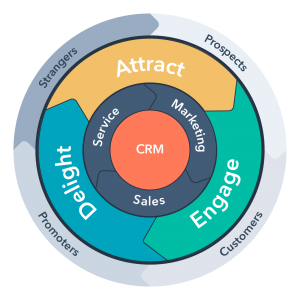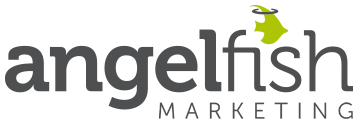At the Inbound 2018 conference earlier this year, Brian Halligan, CEO of HubSpot, announced that the inbound marketing methodology is changing. As marketers, we have become very accustomed to using the marketing ‘funnel’ model when devising and managing our marketing strategies. We know how it works; the process is simple: attract, convert, close, delight. The focus in recent years has been on the attract stage; creating valuable content to pull customers in has been the best way to generate new leads and grow your business. But now, 'cracks' are starting to appear in this funnel.
The first crack is that the funnel model treats customers as outputs of sales and marketing, not inputs. This means that the process stops as soon as a buyer comes to the end of their journey and you have to start again, acquiring a new set of customers.
So how can customers become inputs, sending new leads to your business without you doing so much of the legwork?
This is where the new inbound model comes in: the inbound marketing flywheel.

The concept of a flywheel:
The flywheel was invented by James Watt 200 years ago. It’s essentially a disc on an axis, and is very energy-efficient; it stores energy which fuels its spin. The more energy it has, the faster it will turn.

Therefore, where funnels lose their momentum once a buyer reaches the end of their journey, flywheels leverage their momentum to keep spinning.
But how do you do this?
The secret is to shift your focus from the attract stage, to the delight stage. The happier your existing customers are, the more likely it is that they’ll spread the news about your business to others, ergo creating a positive buzz about your products or services. Word-of-mouth is now more popular than ever; trust between the customer and sales/marketing teams has never been so low. People want to know first-hand how good your business is. And how do they do this? By going off the recommendations of existing buyers.
So we know that the marketing flywheel needs a force to make it spin, and that this force is growth. But what else does it need to function to its best ability?
Less People = Less Friction
Now that you’ve got your wheel spinning, you’ve got to make sure it doesn’t slow down; you’ve got to ensure there is as little friction as possible, and this means cutting down on human interaction.
That’s right: buyers don’t want to talk to sales teams anymore! In fact, Halligan advises that as much as 80% of your customer interactions now need to be automated. That’s why AI technology such as chatbots are becoming more and more popular. In today’s world, people are not patient; they want answers to their questions now, without a fuss. So, what better way to meet this demand than by employing an automated response for all of your leads who ask the common questions? Less human interaction means less friction, which leads to happy customers.
Another way to reduce friction is by thinking about your employees’ areas of expertise. Today, when a business grows, humans are added to a workforce and these humans have specific areas of expertise. This means that, currently, customers are passed between many different people as they go through their buying journey. But this is causing a lot of friction and, as we now know, friction is the enemy! So what can be done about this? Well, in the future, employees will have to be trained differently so that they are able to advise customers on many different areas of the business, avoiding the need to pass the customer around to other members of the team. This means that the customer only needs to speak to one person, if any at all.
Good Composition = More Growth
The composition of your marketing flywheel details how big it is, and how much it weighs. The more delighted customers you generate, the more recommendations you will get, the heavier your wheel will become, and therefore it will turn faster. But if a flywheel starts spinning too quickly, it can break. Therefore, it needs to be made from very high-quality and scalable materials. For example, using a software such as Hubspot, which can scale alongside a business as it grows, is important.
Putting Customers at the Centre

At Angelfish Marketing, we are now combining the funnel and the flywheel models to create a holistic approach to customer experience. Essentially, we still recognise the importance of the different stages of the funnel: attract, convert, close, delight. But now, we are integrating these stages into the new model (or ‘wrapping them around’ the flywheel) to ensure that the customer always stays at the centre of what we do:

Delight, delight, delight!
To sum up, focusing your energy on delighting your customers will fuel your inbound marketing flywheel and grow your business. Happy customers will share their experience with others, and will act as promoters for your company - resulting in more new customers! Offering free trials and great return policies means that buyers feel that there is less risk to making a purchase. Be on top of your quality control: the better the product or service, the more likely it is that the customer will remember you when recommending to a friend. The hardest part is getting the ball rolling (or the wheel spinning!), but once you know how to maximise delight and word-of-mouth, you can start implementing these new strategies.
Watch Halligan’s presentation here.
To get your marketing flywheel spinning, why not start by applying for our free health check? We will conduct a digital marketing review of you business and send you an initial report of our findings. Then, you'll get a free one hour consultancy with one of our inbound marketing experts! Find out more here.










